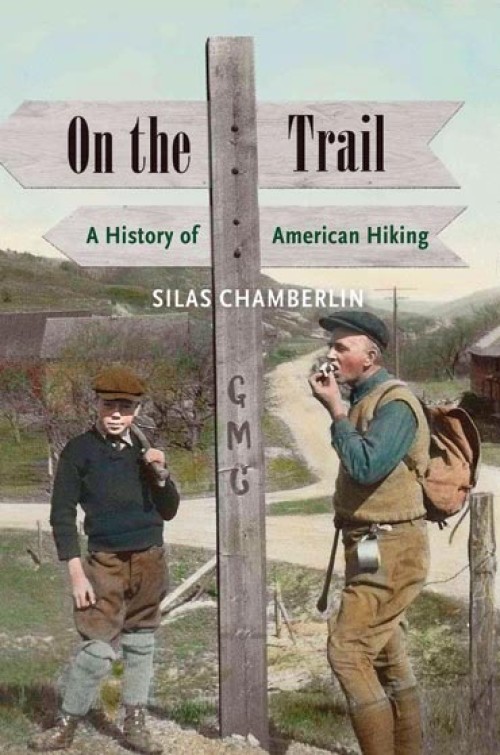by Silas Chamberlain
Yale University Press, 2016
In this fascinating and well-researched history, scholar Silas Chamberlain traces the evolution of hiking in America from the early 1800s to today. He describes how romantic and transcendental writers such as Wordsworth, Thoreau, and Emerson, and artists like Thomas Cole, set the stage for the rise of hiking by celebrating walking and glorifying landscapes. “I think that I cannot preserve my health and spirits, unless I spend four hours a day at least … sauntering through the woods and over the hills and fields, absolutely free from all worldly engagements,” wrote Thoreau. In the 1830s, health concerns led to the siting of cemeteries on the outskirts, rather than inside cities, providing garden-like places to walk, and in the mid-nineteenth century, cities began to develop large public parks.
Most importantly, Chamberlain argues, improvements in transportation such as the horse-drawn omnibus, horse railway, train, and streetcar freed many city-dwellers from the necessity of walking long distances every day. Higher wages, more leisure time, and a growing appreciation for nature as an antidote to industrialization also contributed to an increase in walking for pleasure.
Quoting from club newsletters and archives, and incorporating historic photos, Chamberlain describes the formation and activities of hiking clubs, first in New England and then on the West Coast (Sierra Club, Oregon’s Mazamas), and eventually along the Appalachians and in the Midwest. These clubs were formed by middle- to upper-middle-class city residents who were often leaders in business, politics, or education, and included women. Some, such as the Appalachian Mountain Club, had a dual mission of scientific exploration and recreation. The clubs justified hiking even in war-time for health, religious, and patriotic reasons, but socializing with other was their primary purpose. Chamberlain details the rise of college outing clubs in the early 1900s, such as the Dartmouth Outing Club, whose ambitious outings schedule and chain of cabins were enabled by a wealthy alum.
As hiking culture spread, some clubs turned their attention toward expanding hiking opportunities by building trails. Vermont’s Green Mountain Club built the Long Trail, the nation’s first long-distance hiking trail, between 1910 and 1930. Other clubs began construction of the Appalachian and Pacific Crest Trails soon after the Long Trail started.
World War II spawned a change in hiking culture, according to Chamberlain. Beginning in the late 1940s, surplus military equipment, improved access to trails with the expansion of interstate highways, and a growing interest in experiencing nature led to a rapid increase in the number of Americans hiking. However, many eschewed club membership in favor of hiking alone or in small groups of friends and family. The book describes Earl Shaffer’s first through-hike of the Appalachian Trail in 1947. Depressed by the death of his buddy in the war, Shaffer hiked to “walk the army out of my system, both mentally and physically.”
The passage of the National Trails System Act in 1968 was a watershed moment for hiking, but also, says Chamberlain, a factor leading to the decline of the volunteer ethic and the dominance of hiking clubs as Americans came to expect governments to provide trails.
Today’s hiking community, writes Chamberlain is “a loose gathering of millions of Americans consuming equipment, information, and physical trails produced by private businesses, professional environmental groups, and government.” Although many hiking clubs are still going strong and membership has grown over the years, fewer than 1 percent of Americans who hike are active club members.
Both history-lovers and avid hikers will enjoy learning about the rich hiking culture that led to the abundance of trails and hiking opportunities we often take for granted today.


